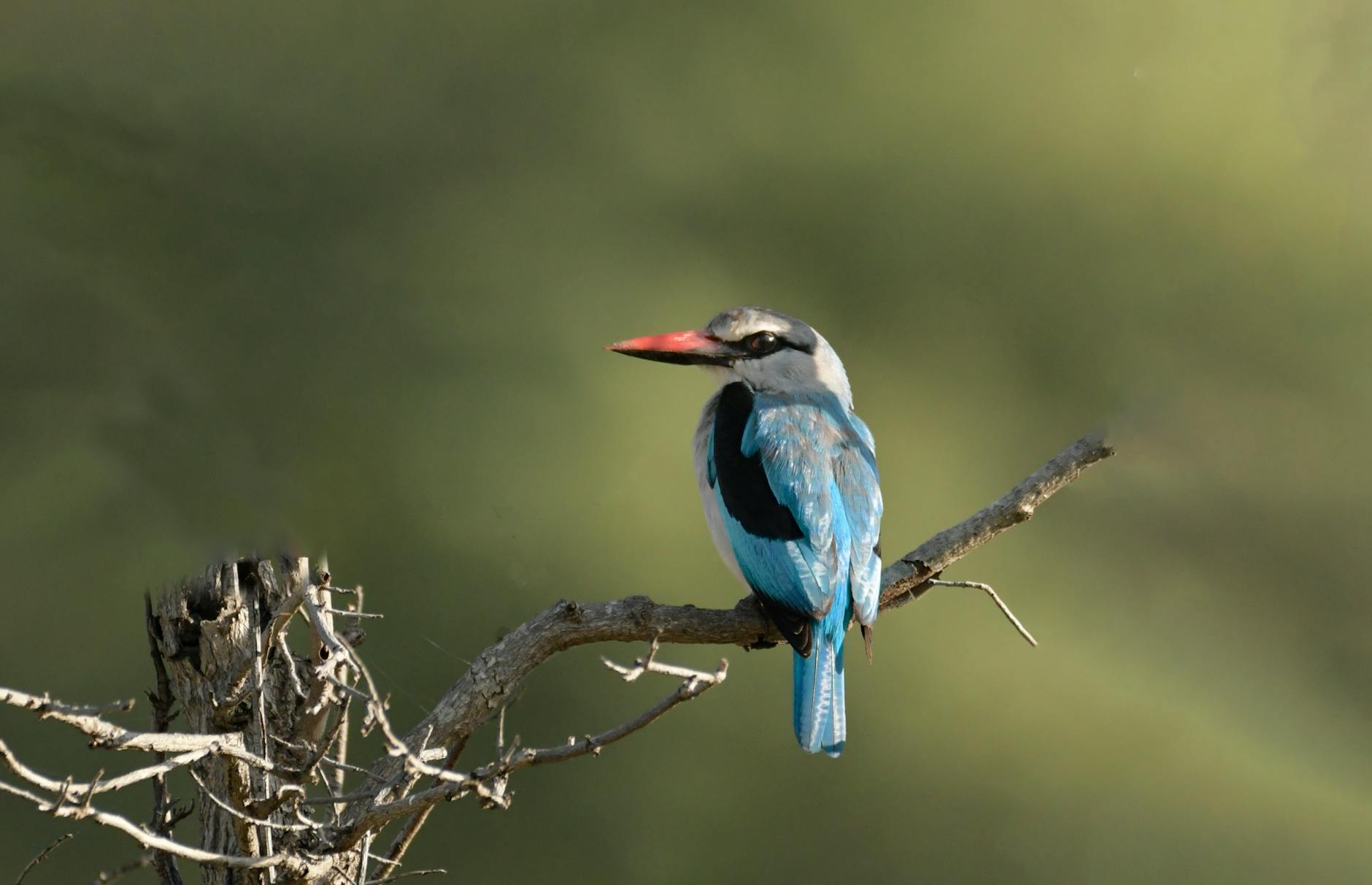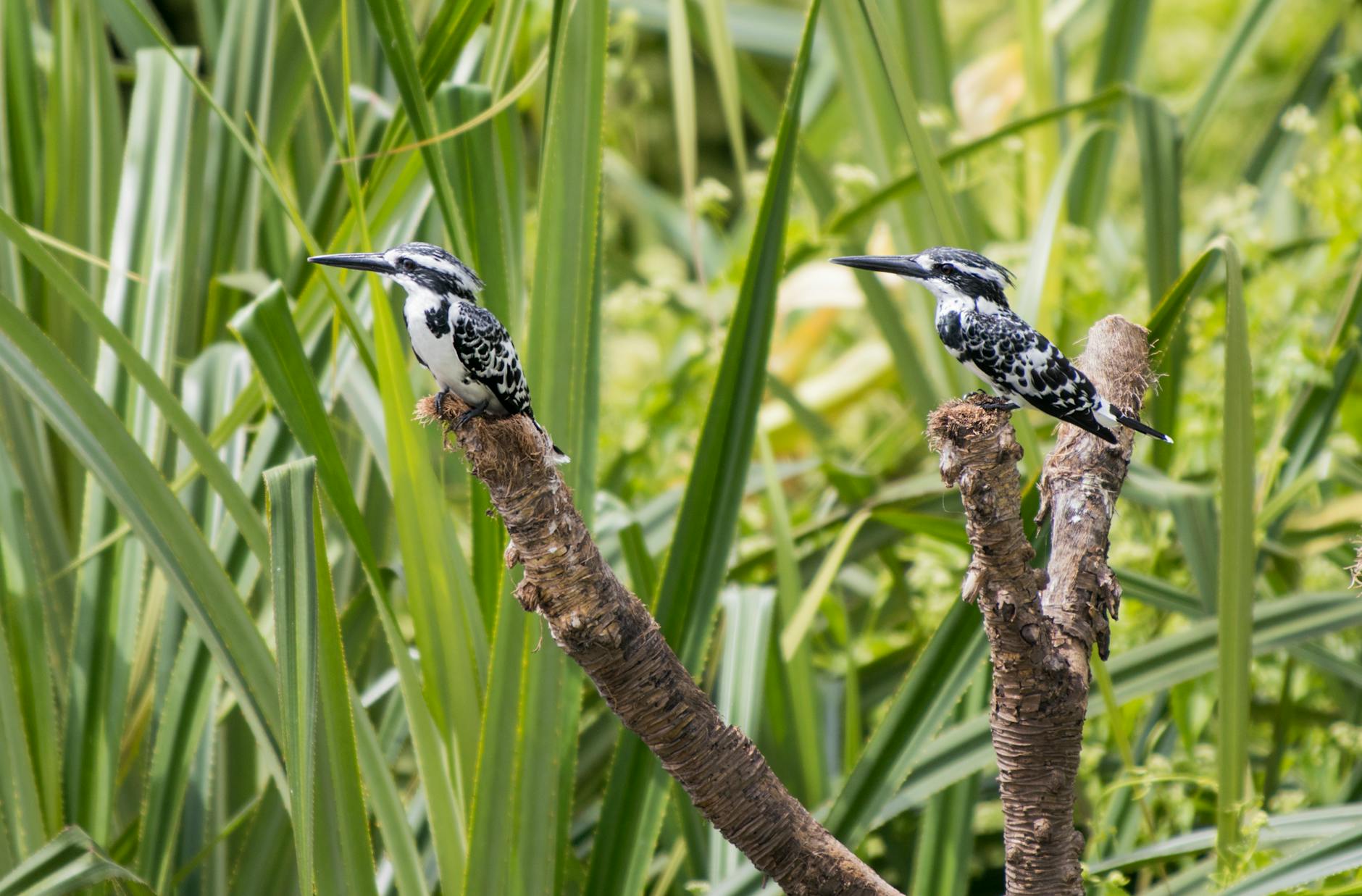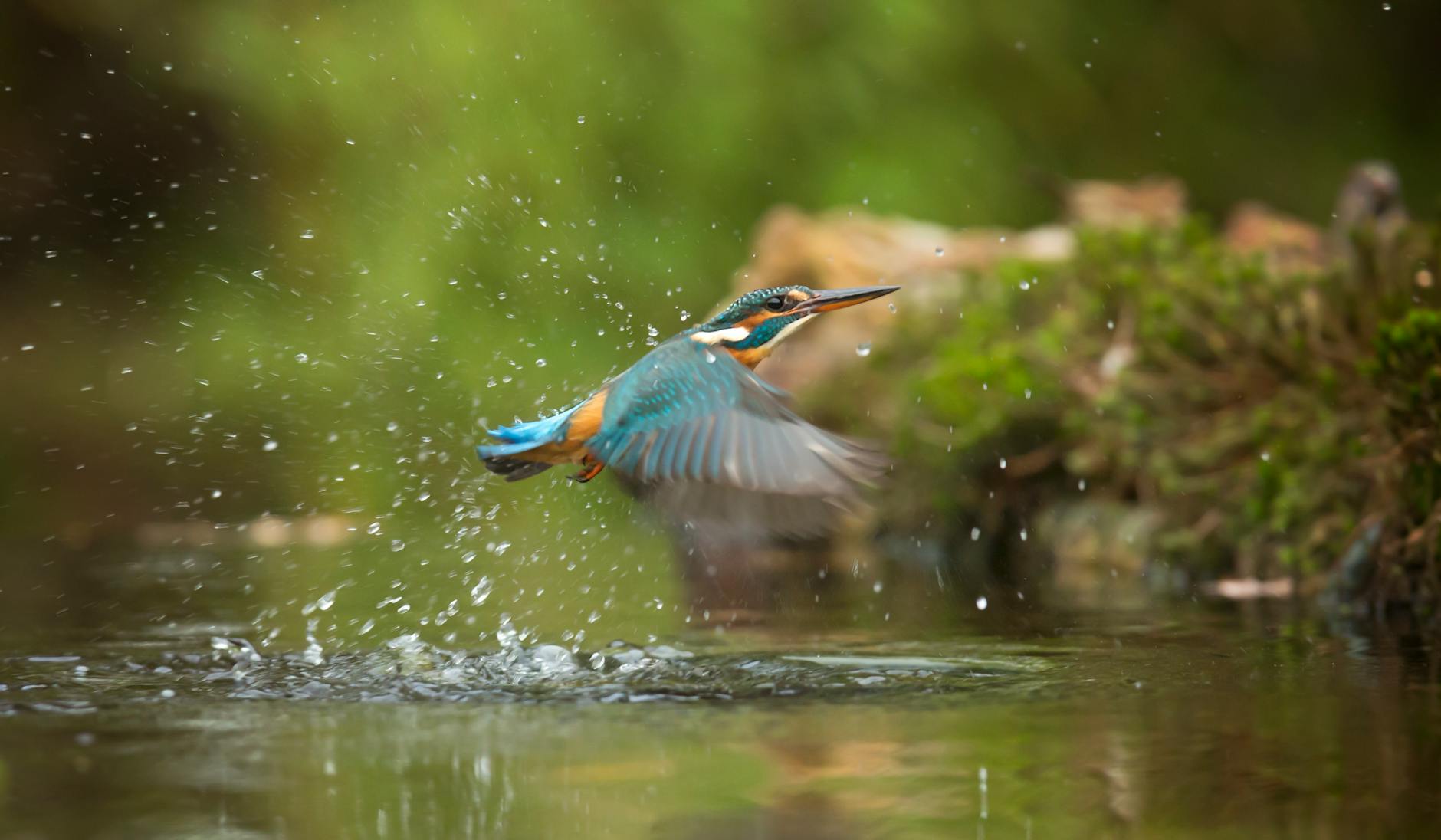How to Spot a Kingfisher: Essential Tips for Birdwatchers
Kingfishers are truly captivating birds, and spotting one can be an exhilarating experience for any birdwatcher. Their vibrant colours and swift movements make them a delight to observe in the wild. But how do you actually spot these elusive creatures? This guide will provide you with key tips on where to look and what signs to watch for, enhancing your birdwatching skills.
Understanding the habitat and behaviour of kingfishers is essential. They often prefer areas with shallow water and abundant vegetation, where they can hunt for fish. Patience and stealth are crucial; being quiet and camouflaged can significantly increase your chances of seeing them. Equip yourself with the right knowledge, and soon you’ll find yourself not only spotting kingfishers but truly appreciating the beauty of these remarkable birds.
Understanding Kingfisher Species
Kingfishers are fascinating birds to observe, particularly in the UK where a few key species make their home. Being aware of the common types and their distinct features can significantly enhance your birdwatching experience.
Common Species to Look For
In the UK, you’re likely to encounter primarily two kingfisher species:
- Common Kingfisher (Alcedo atthis): This species is easily recognised by its bright blue and orange plumage. It’s often found near rivers and lakes, where it hunts for fish. For more about this species, check out Woodland Trust or RSPB.
- Belted Kingfisher (Megaceryle alcyon): While more commonly spotted in North America, this kingfisher can occasionally be seen in the UK. It has a distinctive shaggy crest and a stocky build. To identify it better, refer to the resources from All About Birds.
Physical Characteristics
Kingfishers exhibit stunning physical traits that make them easy to identify. Here are some features to note:
- Size: Most kingfishers range from 10 to 46 cm in length. The Common Kingfisher is relatively small, around 16-17 cm long, making it compact and agile.
- Bill: They possess long, sharp, pointed bills, perfect for catching fish. This feature is crucial in distinguishing them from other similar-sized birds.
- Colouration: The Common Kingfisher showcases vibrant blue feathers above and bright orange beneath. In contrast, the Belted Kingfisher has a blue-grey colour with white underparts and a distinctive belt around its chest. Discover more about their unique looks at Wikipedia or San Diego Zoo.
- Body Structure: Kingfishers have stocky bodies, helping them to dive efficiently. Their short legs may seem unremarkable but are well-suited for perching and launching into flight.
The combination of these attributes makes kingfishers a sight to behold. Keep these features in mind when you’re out birdwatching, and you’ll be better equipped to identify and appreciate these remarkable birds.

Photo by Frans van Heerden
Best Habitats for Spotting Kingfishers
To successfully spot kingfishers, understanding their preferred habitats is crucial. These striking birds thrive in environments that offer both ample food sources and suitable perches. Here are the key areas where you’re most likely to find them.
Water Bodies
Kingfishers are particularly drawn to shallow waters, rivers, and lakes. These aquatic environments provide the perfect hunting grounds. Look for:
- Shallow Rivers and Streams: Kingfishers prefer regions where the water is not too deep, allowing them to dive and hunt effortlessly. They often perch on low branches near the water’s edge, waiting for fish to swim by.
- Lakes and Ponds: Calm, still waters are ideal for spotting these birds. They tend to frequent lakes with abundant fish populations and ample vegetation along the banks.
- Marshes and Wetlands: These areas can be rich in fish and other aquatic life. Kingfishers often nest in riverbanks or the edges of these habitats.
For a deeper understanding of where to see kingfishers, check out WWT’s top tips on spotting techniques, and learn more about the importance of water bodies on Hayulls.

Photo by Ramesha Sheshachala
Vegetation and Perches
The right vegetation and perches play a fundamental role in spotting kingfishers. With their keen eyesight, these birds rely on specific surroundings to thrive. Here’s what to look for:
- Low Vegetation: Kingfishers favour areas with overhanging branches and dense shrubs. These locations provide shelter and a vantage point for hunting. Look for young trees, reeds, and bushes near water bodies.
- Perches: You’ll often see kingfishers perched on low branches above the water. Ideal perches may include:
- Tree Branches: Overhanging branches that extend over shallow water make excellent spots for hunting.
- Reeds and Grasses: These plants provide both cover and good visual access to the water.
By understanding these habitat preferences, birdwatchers can improve their odds of encountering these beautiful birds. For further insights into habitat use, consider this article from All About Birds that explores the life history of kingfishers in various environments.
Tips for Spotting Kingfishers
Spotting a kingfisher can be a rewarding experience, but it requires a bit of strategy. By knowing the right techniques, you can significantly increase your chances. Here are some essential tips to keep in mind when you venture out.
Timing Your Visits
Choosing the right time for your birdwatching outings makes a big difference. Kingfishers are most active during certain parts of the day and year. Early mornings and late afternoons are prime times for spotting these birds, as they hunt for food.
- Best Months: The breeding season from April to August is particularly fruitful. During this time, kingfishers are busy feeding their young and are often seen darting around more frequently. For additional insights on timing, check out WWT’s tips.

Photo by Monique Laats
Staying Quiet and Still
Kingfishers have excellent hearing and vision. Any sudden movement or noise can frighten them away. To improve your chances:
- Remain Silent: Use hushed tones to communicate if you’re with others.
- Stay Still: Find a good spot to settle in and minimise any movement. The less disturbance you cause, the better your chances of seeing one.
Consider using a hide or natural cover to help blend in with the environment. For more on stealth techniques, refer to this guide on spotting techniques.
Dressing Appropriately
What you wear can influence your success in spotting kingfishers. Bright colours might attract their attention, while muted tones allow you to blend in more effectively.
- Neutral Colours: Opt for earthy shades like green, brown, or grey. This way, you camouflage yourself against the natural surroundings, making it less likely for the birds to notice you.
Using Binoculars Effectively
A good pair of binoculars can greatly enhance your viewing experience. Here are some tips for using binoculars when spotting kingfishers:
- Focus: Before heading out, practice focusing your binoculars. Make sure they are properly adjusted for your eyesight.
- Keep Them Ready: Always have your binoculars handy when near water bodies. You never know when a kingfisher might appear.
- Scan Slowly: Move your binoculars slowly across the environment. Quick movements can make it difficult to locate the birds.
For more tips on getting the most out of your binoculars, visit RSPB’s advice.
Listening for Calls
Kingfishers are known for their distinct calls, which can help you locate them before you see them. Familiarising yourself with their sounds can enhance your birdwatching experience.
- Distinct Sounds: They often make a sharp ‘peep’ or ‘chirp.’ When you hear these noises, pay attention to your surroundings. It may lead you to their location.
Learning to recognise these calls will make it easier to spot kingfishers in the wild. For further information on their calls, consider checking out the Reddit discussion.
By implementing these tips, your chances of spotting a kingfisher will increase tremendously. Prepare yourself with patience and keen observation, and enjoy the beauty of these enchanting birds!
Conservation and Protection
Kingfishers are not just beautiful; they are vital indicators of the health of our freshwater ecosystems. Unfortunately, these stunning birds face significant threats that can endanger their populations. Understanding these challenges is the first step toward their protection.
Threats to Kingfisher Populations
Many factors threaten kingfisher populations, with habitat destruction being the most critical. The primary issues include:
- Habitat Loss: Urban development, agriculture, and industrial activities have led to the destruction of wetlands and riverbanks, vital habitats for kingfishers. This loss reduces nesting sites and food sources, making survival increasingly difficult.
- Pollution: Contaminants from agricultural runoff and waste negatively impact the water quality in rivers and lakes. Polluted environments can lead to toxic conditions, harming both fish populations and kingfishers that feed on them.
- Climate Change: Changing weather patterns and rising temperatures can disrupt the delicate balance of ecosystems where kingfishers thrive. Extreme weather events can also damage nesting areas.
- Invasive Species: The introduction of non-native flora and fauna can lead to competition for resources, making it harder for kingfishers to thrive.
These threats underscore the need for concerted conservation efforts. For more insights into threats affecting kingfisher species, refer to Threats and Conservation Issues of Common Kingfisher.
How Birdwatchers Can Help
Birdwatchers can play a crucial role in kingfisher conservation efforts. Here are some ways you can contribute:
- Support Conservation Initiatives: Get involved with local wildlife organisations that focus on protecting kingfisher habitats. Consider making donations or volunteering your time.
- Create Suitable Habitats: If you have access to a garden or outdoor space, you can create an inviting environment for kingfishers by planting native vegetation and installing nest boxes. Research building a kingfisher perch to attract them to your area. More about this can be found here: 5 challenges kingfishers face & how to help them.
- Participate in Citizen Science: Engage in bird counts or surveys that help track local kingfisher populations. Reporting your sightings can provide valuable data for conservationists.
- Educate Others: Sharing knowledge about kingfishers and their plight can raise awareness and inspire others to take action. Use social media or community events to foster appreciation for these enchanting birds.
- Advocate for Policy Changes: Support policies that aim to protect aquatic habitats and reduce pollution. Participate in local conservation meetings to voice your concerns and advocate for wildlife protection.
Engaging in these activities can significantly contribute to preserving kingfisher populations. For more insights on kingfisher conservation, check out Belted Kingfisher Conservation Summary.

Photo by Siegfried Poepperl
Conclusion
Spotting a kingfisher requires a blend of patience, skill, and the right knowledge. Focus on the best habitats, like shallow waters and lush vegetation, where these beautiful birds thrive. Make the most of your birdwatching experience by choosing the right times to observe, staying quiet, and using effective tools like binoculars.
As you embark on your adventures, remember to respect these creatures and their habitats. What will you observe on your next outing? Share your sightings and experiences with fellow birdwatchers! Your journey in kingfisher spotting is just beginning, and every moment spent observing them is a step toward appreciating nature’s wonders. Thank you for exploring this fascinating topic!










